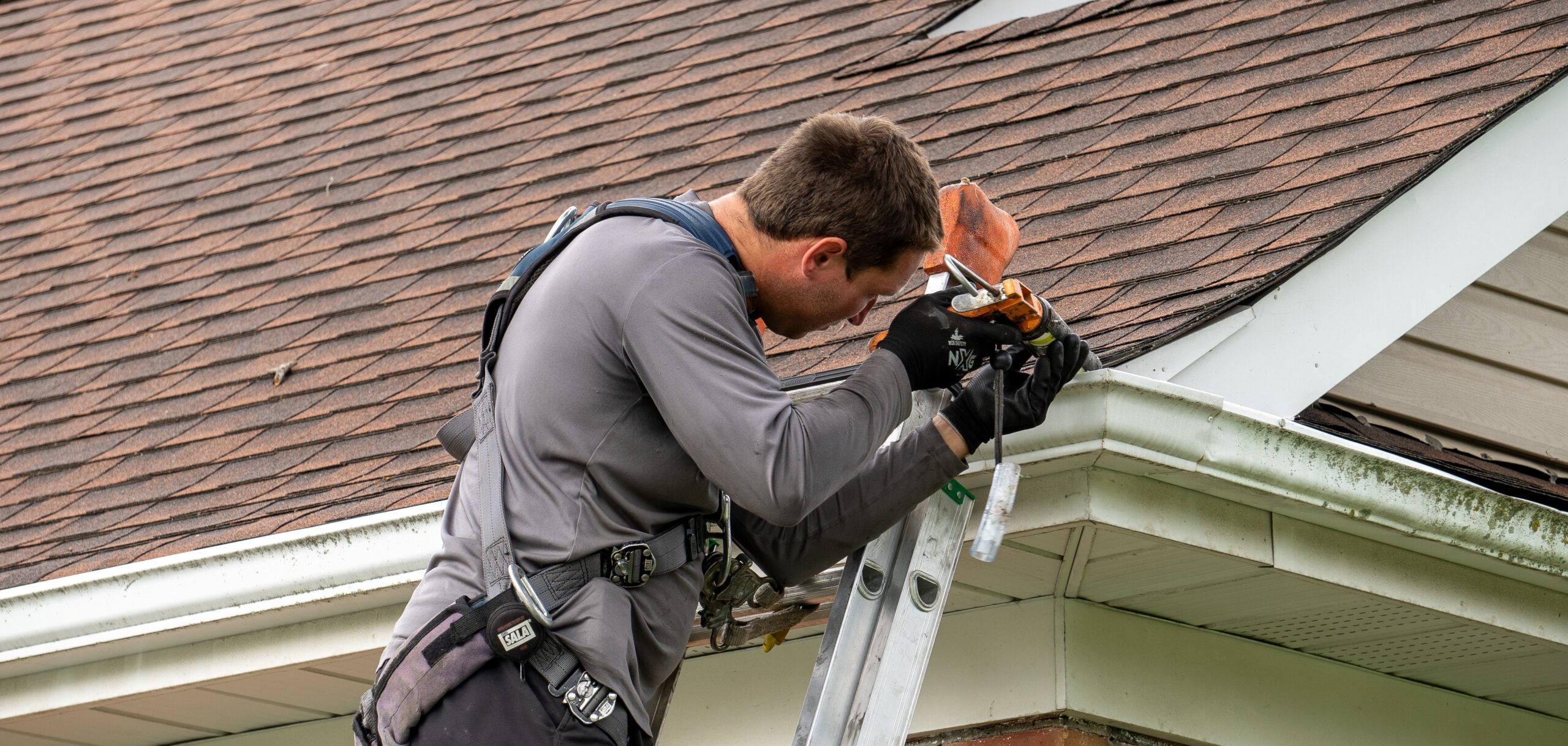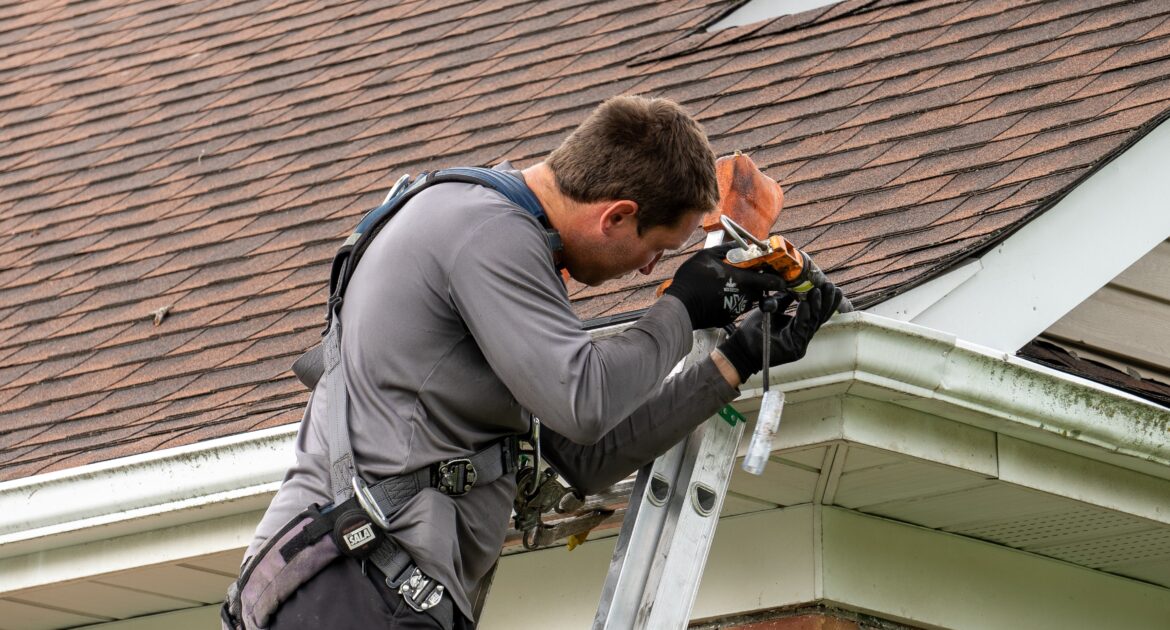Ever felt like you’re not the only one living in your house? That faint scratching in the walls or scurrying across the floors isn’t just your imagination. One mouse may not seem like a big deal, but the truth is you’re rarely dealing with just one. Mice are social creatures, and if you’ve got one, chances are there are more hiding nearby. The real challenge is figuring out how many mice are in your house.
Determining how big your mouse problem is starts with spotting the signs of a mouse infestation. From droppings and gnawed materials to unusual activity at night, clear signs can tell you if mice have set up camp in your home. But how do you count them? Tracking the size of the problem without professional help can be tricky, but knowing what to watch for can help you figure out how many you’re dealing with.
If you live in Durham Region, professional help is just a call away with Skedaddle Humane Wildlife Control.
Signs You Have a Mouse Infestation
The first step in knowing how many mice are in your home is identifying their presence. Mice leave plenty of telltale signs behind, so watch for the following clues:
- Droppings: Mice droppings resemble small, dark, rice-shaped pellets. Larger piles of droppings usually mean there’s a more active infestation.
- Gnaw Marks: Check furniture, baseboards, and food packaging for chew marks. Mice have sharp teeth and will gnaw on anything to munch or gather materials for nests.
- Tracks and Smudges: Mice often leave tracks and greasy smudges along walls or baseboards as they scurry back and forth.
- Strange Noises: Squeaking, scratching, or movement inside walls or ceilings, especially at night, is a big red flag.
- Nests: Mice build nests using soft materials like paper, fabric, or insulation. Look in hidden corners, behind appliances, and inside storage areas for these tiny hideouts.
- Stray Food Particles: Mice often take food back to their nests. If you find small piles of food crumbs in strange places, mice are likely the culprits.
If you notice even one of these signs, act quickly. Mice are excellent breeders; a few can turn into an infestation in no time.
How To Count Mice in Your House
Knowing how many mice you’re dealing with isn’t as simple as taking a headcount. Mice themselves are good at staying hidden, but their activity levels can hint at the size of the infestation. Here are a few tips to help estimate the mouse population in your home:
Count the Number of Droppings
The more droppings you find, the larger the infestation. Fresh droppings mean active mice, and their distribution can also show where mice are nesting or feeding. Check under sinks, inside cabinets, and along walls, as these are common areas for droppings to pile up. Regularly finding droppings in multiple locations may indicate that more than one nest exists in your home.
Look for High Traffic Areas
Mice often stick to the same routes along walls, under furniture, or around food sources. If you’re noticing heavy activity in multiple areas, you likely have several mice or even separate colonies. Keep an eye out for smudge marks, footprints, or noticeable signs of repeated use, like scattered food crumbs or disturbed dust. These paths can also reveal where mice are entering or exiting your home.
Note the Damage
One or two gnawed items might mean you’ve caught the problem early. However, if you see damaged furniture, chewed wires, and shredded materials all over, that points to a growing infestation. Mice can chew through wood, drywall, and even plastic, so take note of how extensive the damage appears. The bigger the mess, the more mice you’re likely dealing with as they spread and look for new resources.
Stay Alert at Night
Mice are nocturnal, so the best time to gauge their numbers is in the evening. A single mouse might go unnoticed, but scurrying sounds from multiple directions likely mean a bigger group. Listen carefully for scratching in walls, squealing noises, or movement above ceilings. These signs might even come from different areas of your home, suggesting several nests.
Why Mice Multiply Quickly
Mice are remarkable in their ability to reproduce at an incredibly fast rate, making them one of the most persistent pests homeowners face. A single female mouse becomes sexually mature at just six weeks old and can produce six to ten litters per year. Each litter often contains between six to twelve pups, meaning that one mouse can realistically lead to dozens of offspring within just a short span of months. Under ideal conditions, the offspring can also begin reproducing within weeks, multiplying the population exponentially. What starts as just a couple of mice can spiral into an infestation involving hundreds in an alarmingly short time.
This rapid reproduction isn’t just impressive from a biological standpoint; it’s also what makes mice such a challenging problem to control. Mice reproduce year-round as long as they have access to food, warmth, and shelter. This makes homes particularly attractive, especially during colder months when outdoor food sources may dwindle. Worse yet, mice are social creatures, and their natural nesting instincts can lead to colonies spreading throughout the home, often in hidden spaces like walls, attics, or basements. The ability to go undetected until the population has grown significantly only increases the potential for long-term damage.
Unchecked mouse infestations can lead to a host of problems for homeowners. Mice are notorious for their gnawing behaviours, and when left unchecked, they can chew through wires, insulation, furniture, and even structural components of a home. This not only results in expensive repairs but also increases the risk of electrical fires. Beyond structural damage, mice carry diseases like hantavirus and salmonella, which can pose serious health risks to your family. Their droppings and urine contaminate food sources, and allergens from their dander can trigger respiratory issues.
This is why early intervention is so important when dealing with mice. If you suspect even a small presence of these rodents in your home, it’s crucial to act fast. The earlier you address the problem, the easier it is to manage. Seal up any potential entry points, eliminate access to food and water, and consider consulting a pest control professional to ensure complete removal. Ignoring the issue only allows the population to grow, leading to bigger headaches and more costly solutions down the line. By tackling the problem early, you can protect your home, your health, and your peace of mind.
Mice Infestation Tips for Homeowners
Preventing and controlling a mouse problem requires effort and vigilance. Here are some mice infestation tips to help reduce the risk of an infestation and keep your home rodent-free:
- Seal Entry Points: Mice can squeeze through gaps as small as 6 millimetres wide. Check your home’s exterior and plug any cracks, gaps, or holes. Pay extra attention to areas around doors, windows, and pipes.
- Remove Their Food Supply: Keep food stored in sealed containers, promptly clean up crumbs and spills, and avoid letting dirty dishes sit out overnight.
- Clear Out Clutter: Mice love hiding in cluttered spaces. Declutter your home, especially storage areas like basements, attics, and garages.
- Secure Your Garbage: Mice are happy to dig through trash for a meal. Use garbage cans with tight-fitting lids and regularly remove waste from your home.
- Inspect Regularly: Regularly check hidden areas like behind appliances, storage boxes, and under sinks for signs of activity. Early detection is key to keeping infestations under control.
While these tips can help minimize the risk of mice, a full-blown infestation often requires professional help to fully resolve.
Why Professional Wildlife Control is the Smart Move
Mice are experts at avoiding detection, and DIY methods rarely solve the problem long-term. That’s where Skedaddle Humane Wildlife Control in Durham Region can make all the difference. Our trained technicians use humane solutions to remove mice without the risks of traps or poison spreading through your home.
Skedaddle’s specialized one-way doors are particularly effective. These devices allow mice out of your home while preventing them from coming back in. Not only does this solve the immediate infestation, but it also keeps future invaders out. Plus, we identify and seal entry points to avoid recurrence.
Choosing professionals saves time, stress, and the mess of handling mice yourself. If you’ve noticed signs of a mouse infestation in your home, the safest choice is to leave it in expert hands.
Take Action Now
Your home shouldn’t be a playground for mice. If you’re hearing noises behind your walls, finding droppings, or spotting other signs of a mouse infestation, it’s time to act. Trying to figure out how to count mice in your house on your own can be overwhelming, but Skedaddle Humane Wildlife Control in Durham Region is here to help.
Contact us today to request an estimate and take the first step toward a mouse-free home. Our expert team is ready to make sure your living space is safe, clean, and clear of unwanted guests.




